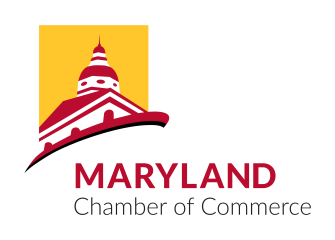
Watch today’s press conference.
Read the roadmap at governor.maryland.gov/recovery.
Read the slides from today’s press conference.
The governor was joined for today’s press conference by Dr. Tom Inglesby, director of the Center for Health Security of the Johns Hopkins Bloomberg School of Public Health, and Maryland Department of Commerce Secretary Kelly Schulz.
Foundation for Recovery Plan. The ‘Maryland Strong: Roadmap to Recovery’ incorporates the principles of the National Governors Association’s ‘Roadmap to Recovery, utilizes the guidelines that were issued by the White House, and takes into account much of the work of the recovery plans published by the American Enterprise Institute and Johns Hopkins.
Building Blocks. As Governor Hogan announced on Wednesday, Maryland has made considerable progress on the four building blocks that needed to be firmly in place before the state can consider lifting restrictions:
- Expanded testing capacity
- Increased hospital surge capacity
- Ramping up supply of PPE
- Robust contact tracing operation
Data Trends. To determine when a recovery can begin, Maryland officials will focus on the rate of hospitalizations and the number of patients admitted to ICU. If these numbers continue to plateau, Maryland could be ready to begin the recovery in early May. Marylanders can access this data daily at coronavirus.maryland.gov.
The ‘Maryland Strong: Roadmap to Recovery’ is divided into three stages:
- STAGE ONE calls for lifting the stay-at-home order, and involves business, community, religious, and quality of life improvements. Examples of changes that could be implemented in this stage include:
- Reopening of small shops and certain small businesses
- Curbside pickup and drop-off for businesses
- Elective medical and dental procedures at ambulatory, outpatient, and medical offices
- Limited attendance outdoor religious gatherings
- Recreational boating, fishing, golf, tennis, hiking, and hunting
- Reopening of car washes
- Limited outdoor gym and fitness classes
- Outdoor work with appropriate distancing measures
- Some personal services
- STAGE TWO will likely be a longer stage of the initial recovery, but will also be the stage when a large number of businesses and activities come back online. Any businesses that reopen during this period would need to comply with strict physical distancing and appropriate safety protocols. Examples of changes that could be implemented in this stage include:
- Raising the cap on social gatherings
- Indoor gyms and fitness classes
- Childcare centers
- Normal transit schedules
- Indoor religious gatherings
- Reopening of restaurants and bars with restrictions
- Elective and outpatient procedures at hospitals
- STAGE THREE will involve instituting higher-risk activities, but there is no realistic timeline yet for achieving this level. Examples of changes that could be implemented in this stage include:
- Larger social gatherings
- Reopening of high-capacity bars and restaurants
- Lessened restrictions on visits to nursing homes and hospitals
- Reopening of entertainment venues
- Larger religious gatherings
Regional Approach. The Roadmap contemplates offering some flexibility to health officers of county and municipal governments, and considering regional differences in COVID-19 conditions.
In each stage, the state will evaluate which localities meet appropriate gating criteria in the jurisdiction and/or region. In the event a locality has satisfied the gating criteria, county health officers will be permitted to expand the permitted activities and businesses under parameters of the current stage identified by the state.
Coronavirus Recovery Team. Governor Hogan is transitioning the Maryland Coronavirus Response Team of doctors and public health experts into a broader Coronavirus Recovery Team. The full list of members includes:
- Lt. Governor Boyd K. Rutherford
- Ms. Carol Beatty, Secretary, Maryland Department of Disabilities
- Dr. Wilbur Chen, Chief of the Adult Clinical Studies, Center for Vaccine Development and Global Health, University of Maryland Medical System
- Mr. Augie Chiasera, Senior Vice President and President of M&T Bank’s Baltimore and Chesapeake regions
- Mr. Jim Davis, Chairman and Co-Founder at Allegis Group
- Mr. Ted Delbridge, Director, Institute for Maryland Emergency Medical Services System
- Mr. Robert Doar, President of the American Enterprise Institute
- Dr. Stephen Evans, Chief Medical Officer, MedStar Health
- Dr. Scott Gottlieb, Former Commissioner of the Food and Drug Administration (FDA) resident fellow at the American Enterprise Institute (AEI)
- Dr. Tom Inglesby, Director, Johns Hopkins Center for Health Security,
- Ms. Rona Kramer, Secretary, Maryland Department of Aging
- Dr. John Loome, Senior VP, Medical Affairs – Genesis Healthcare
- Dr. Lisa Maragakis, Senior Director of Infection Prevention, Johns Hopkins Health System.
- Dr. David Marcozzi, Assistant Chief Medical Officer for Acute Care, University of Maryland Medical System
- Mr. Mark McManus, General President, United Association
- Mr. Robert Neall, Secretary, Maryland Department of Health
- Ms. Fran Phillips, Deputy Secretary for Public Health, Maryland Department of Health
- Mr. Kevin Plank, Founder and Executive Chairman, Under Armour
- Dr. Karen Salmon, State Superintendent, Maryland State Department of Education
- Dr. Mitch Schwartz, Chief Medical Officer and President of Physician Enterprise, Luminis Health
- Dr. Linda Singh, Interim Executive Director and CEO, TEDCO; Major General (Retired), Maryland National Guard
- Mr. Arne Sorenson, President and Chief Executive Officer of Marriott International
Industry-Specific Advisory Groups. Governor Hogan has directed Secretary Schulz and the Maryland Department of Commerce to form advisory groups to develop recommendations and best practices for their industries to responsibly reopen and operate. These recommendations will also be carefully reviewed by the Coronavirus Recovery Team. Key industry sectors include:
- Retail
- Accommodations
- Sports
- Restaurants and Bars
- Attractions
- Destinations
- Tourism
- Transportation
- Manufacturing
- Professional and Financial Services
- Personal Services, and Small Business
- Construction and Development
- Arts
In addition, Governor Hogan has established two advisory groups through the Governor’s Office of Community Initiatives to get valuable ongoing input during the recovery from religious groups and nonprofit organizations:
- Faith-Based Organizations and Churches
- Service Organizations and Nonprofits
Visit governor.maryland.gov/recovery for more information and to sign up for updates about Maryland’s recovery plan.


